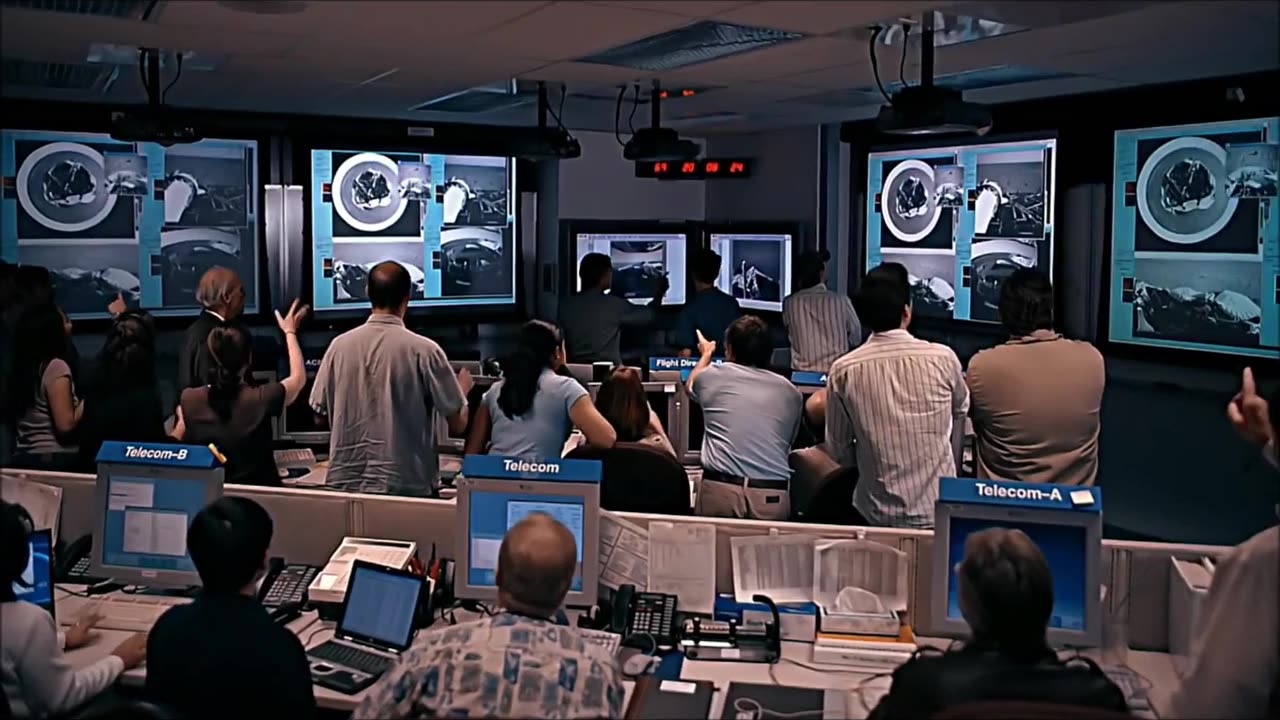Premium Only Content

★ How to Get to Mars. Very Cool!
1. Rocket Launch:
The journey to Mars begins with a spectacular rocket launch. Imagine standing by the launchpad, feeling the ground shake as a massive rocket propels itself into space. Rockets like the SpaceX Starship or NASA's Space Launch System will carry astronauts and payloads beyond Earth's atmosphere.
2. Trajectory:
Once in space, we need to chart the right trajectory to Mars. Timing is crucial, as Earth and Mars have to be aligned properly. This occurs approximately every 26 months, known as the "Mars transfer window." The spacecraft will follow a path called a Hohmann transfer orbit, optimizing fuel efficiency for the journey.
3. Spacecraft:
The spacecraft itself is a marvel of engineering. It's designed to protect astronauts from radiation and extreme temperatures, maintain life support systems, and carry all the supplies needed for the long voyage. The spacecraft might even have a futuristic "recycling" system to minimize waste.
4. Duration:
The trip to Mars can take anywhere from 6 to 9 months, depending on the specific mission and propulsion technology. During this time, astronauts must stay mentally and physically fit in the confined space of the spacecraft, making it a test of human endurance and teamwork.
5. Gravity Assist:
The spacecraft might use gravity assists from other celestial bodies, like Venus or Earth's Moon, to change its speed and trajectory, conserving fuel and allowing for course corrections.
6. Arrival at Mars:
As the spacecraft approaches Mars, the landing process is a heart-pounding experience. Technologies like the "Sky Crane" or "Red Dragon" may be used to gently lower astronauts and payloads to the Martian surface, ensuring a safe landing.
7. Surface Operations:
Once on Mars, astronauts will conduct scientific experiments, explore the Martian landscape, and test technologies that will be crucial for future missions. They'll wear futuristic spacesuits and use advanced equipment to survive in the harsh Martian environment.
8. Return to Earth:
After their mission on Mars, astronauts need to return home. They'll launch from Mars' surface, rendezvous with their return spacecraft in orbit, and then embark on a journey back to Earth. The return trip follows a similar trajectory, with precise calculations and navigation.
9. Reentry and Splashdown:
The spacecraft will re-enter Earth's atmosphere at incredible speeds, creating a stunning fireball. Advanced heat shields will protect the astronauts as they descend, eventually splashing down in the ocean, where recovery teams will retrieve them.
10. Celebrate Success:
Successfully reaching Mars and returning safely to Earth is a monumental achievement. It represents the pinnacle of human exploration, inspiring generations to come and advancing our understanding of the cosmos.
-
 3:17:28
3:17:28
TimcastIRL
5 hours agoTrans Shooter Targets Catholic Kids In Mass Shooting, Leftists Reject Prayers | Timcast IRL
220K60 -
 1:31:29
1:31:29
Brandon Gentile
1 day ago25 Year Wall Street INSIDER: $1M Bitcoin Soon Is Just The START
18.2K -
 LIVE
LIVE
SpartakusLIVE
7 hours ago#1 Birthday Boy Celebrates with MASSIVE and HUGE 4.8-Hour Stream
339 watching -
 55:54
55:54
Man in America
8 hours agoFrom Oil Barons to Pill Pushers: The Rockefeller War on Health w/ Jeff Adam
47K4 -
 3:02:18
3:02:18
Barry Cunningham
6 hours agoBREAKING NEWS: PRESIDENT TRUMP THIS INSANITY MUST END NOW!
92.8K160 -
 3:58:27
3:58:27
StevieTLIVE
5 hours agoWednesday Warzone Solo HYPE #1 Mullet on Rumble
37.8K -
 5:58
5:58
Mrgunsngear
6 hours ago $3.67 earnedBreaking: The New Republican Party Chairman Is Anti 2nd Amendment
29.3K9 -
 2:28:35
2:28:35
Geeks + Gamers
5 hours agoGeeks+Gamers Play- MARIO KART WORLD
28.7K -
![(8/27/2025) | SG Sits Down Again w/ Sam Anthony of [Your]News: Progress Reports on Securing "We The People" Citizen Journalism](https://1a-1791.com/video/fww1/d1/s8/6/G/L/3/c/GL3cz.0kob.1.jpg) 29:34
29:34
QNewsPatriot
6 hours ago(8/27/2025) | SG Sits Down Again w/ Sam Anthony of [Your]News: Progress Reports on Securing "We The People" Citizen Journalism
21.8K2 -
 25:12
25:12
Jasmin Laine
11 hours agoDanielle Smith’s EPIC Mic Drop Fact Check Leaves Crowd FROZEN—Poilievre FINISHES the Job
24.5K23